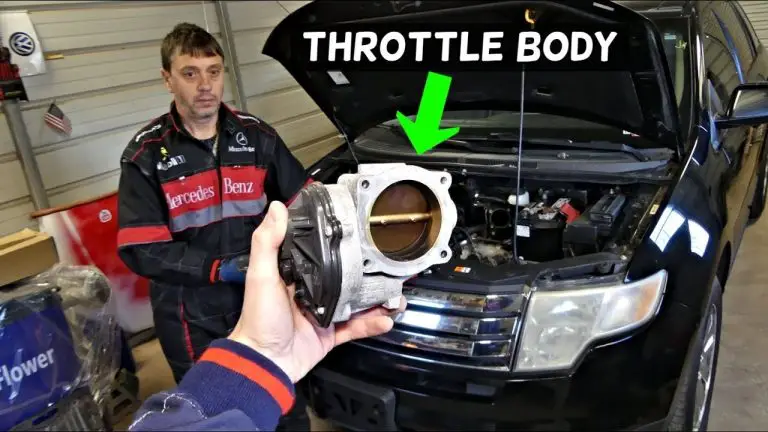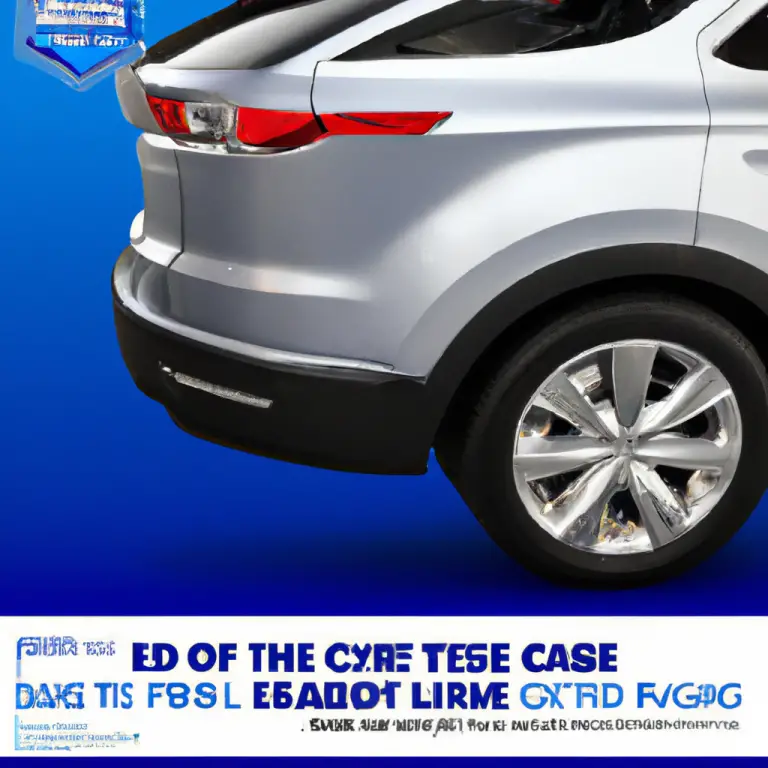How Long Will Your Ford Explorer Last? Miles, Years, & Maximizing Longevity
The Ford Explorer, a popular SUV for families and adventurers, typically offers a substantial service life. Owners can generally expect their Explorer to last anywhere from 80,000 to 200,000 miles, which often translates to 10 to 17 years of reliable transportation. However, this numerical range is not a fixed ceiling. With dedicated care and consistent maintenance, many Ford Explorer owners report their vehicles comfortably surpassing the 200,000-mile mark, with some even achieving impressive odometer readings of 300,000 miles or more. This wide variation highlights that an Explorer’s durability is not a static figure, but rather a dynamic outcome shaped by several critical factors.
This comprehensive guide aims to illuminate the nuances of the Ford Explorer’s potential lifespan. It will explore the key elements that truly determine how long one of these robust SUVs will serve its owner. The discussion will cover the significant influence of driving habits, the indispensable role of consistent maintenance, the fluctuating reliability observed across different model years, and the importance of understanding recent recalls. The objective is to provide Ford enthusiasts, prospective buyers, and DIY mechanics with accurate, up-to-date, and actionable information, empowering them to ensure their Explorer remains a dependable companion for many years to come. The understanding that the vehicle’s longevity is a spectrum, rather than a single number, underscores the importance of the owner’s active role in extending its operational life.
The Mileage & Years: What to Expect from Your Ford Explorer
While the general expectation for a Ford Explorer’s lifespan falls between 80,000 to 200,000 miles, the reality for many diligent owners demonstrates a far greater potential. With proper care, Explorers can comfortably exceed 200,000 miles, and some dedicated individuals have even reported reaching impressive figures of 300,000 miles or more. This demonstrates the vehicle’s inherent capability for long-term durability when it receives the necessary attention.
The rate at which miles accumulate on an Explorer can significantly impact its overall lifespan. Driving approximately 12,000 miles per year is often considered an optimal balance for promoting longevity. Conversely, covering substantially more than this annual average can accelerate wear and tear on components, potentially causing the vehicle to wear out more quickly. This suggests that high-mileage drivers may need to be even more proactive with their vehicle’s upkeep.
As any vehicle ages and accumulates miles, a natural increase in maintenance and repair needs is to be expected. For the Ford Explorer, owners should anticipate these growing requirements. For instance, major performance maintenance is typically necessary around the 150,000-mile mark. Furthermore, critical components such as the timing chain or belt may require replacement as the odometer approaches 200,000 miles. Recognizing these thresholds allows owners to plan proactively, both in terms of budgeting for future expenses and scheduling necessary services, thereby contributing to the vehicle’s extended life. The general mileage and age expectations serve as a starting point, but the owner’s consistent input through maintenance and mindful driving ultimately dictates the vehicle’s true endurance.
Key Factors Influencing Your Explorer’s Lifespan
A Ford Explorer’s longevity is not solely determined by its manufacturing date or design; it is a complex interplay of several critical factors. Understanding these elements is crucial for any owner or prospective buyer looking to maximize their vehicle’s operational life.
Driving Habits and Style
The manner in which a Ford Explorer is driven significantly impacts its long-term durability. Aggressive driving, characterized by frequent rapid accelerations, consistent high-speed travel, and harsh braking, places immense strain on vital components. This includes the engine, transmission, brakes, and suspension, leading to accelerated wear and tear. Such habits can drastically shorten the lifespan of these expensive systems.
The driving environment also plays a pivotal role. City driving, with its inherent stop-and-go traffic, demands more frequent braking and acceleration cycles. This constant cycling can wear components more quickly than the consistent speeds experienced during highway driving. Similarly, regularly traversing steep mountain passes subjects the engine and drivetrain to greater, sustained strain, which can also reduce component life. While the Explorer is capable of towing, consistently hauling heavy loads, especially those near its maximum capacity, can lead to accelerated wear on the transmission, brakes, and suspension systems.
Maintenance Adherence
Strict adherence to the manufacturer’s recommended maintenance schedule is arguably the most critical factor in maximizing an Explorer’s lifespan. This includes routine services such as regular oil and filter changes, fluid checks, and comprehensive inspections. Neglecting these fundamental tasks can result in contaminated fluids, increased friction between moving parts, and eventual component failure. For example, engine oil, vital for lubrication and heat dissipation, loses its effectiveness when old or contaminated, leading to unnecessary wear on engine parts.
Beyond routine checks, preventive maintenance is key. This involves proactively addressing minor issues before they escalate into major, costly repairs. Regular multipoint inspections performed by trained service professionals can identify potential problems early, saving significant expense and extending the vehicle’s life. This proactive approach transforms maintenance from a reactive fix into a strategic investment in the vehicle’s future.
Environmental Conditions
The local climate and typical driving conditions can exert considerable influence on an Explorer’s durability. In colder regions, the road salt used to melt ice can cause extensive corrosion on the vehicle’s undercarriage, brake lines, and other metallic components. Regular washing, particularly of the undercarriage, is essential to mitigate this corrosive damage. Furthermore, prolonged exposure to extreme temperatures, whether intense heat or severe cold, can stress various vehicle systems, affecting fluid viscosity, battery performance, and the integrity of rubber and plastic components.
Ownership History (Crucial for Used Vehicles)
For individuals considering a pre-owned Ford Explorer, the vehicle’s past serves as a strong indicator of its future reliability. A used Explorer with a comprehensive, documented service history is inherently more reliable than one without such records. Always requesting and reviewing maintenance records from the seller is a vital step to ensure the vehicle has received proper care throughout its life. This due diligence helps mitigate risks associated with unknown past neglect.
The factors influencing an Explorer’s longevity are not isolated; they form an interconnected web. For instance, aggressive driving habits will exacerbate component wear, especially if the vehicle is operating in a harsh environment like salted roads, and if routine maintenance, such as fluid changes or brake inspections, is neglected. The impact of one factor can be significantly amplified or mitigated by the others. This complex interplay illustrates a multi-causal relationship where a combination of negative factors can lead to a significantly accelerated decline in vehicle health and a reduced lifespan. Conversely, a combination of positive factors, such as gentle driving, environmental mitigation efforts, and diligent maintenance, results in maximized longevity and reliability. This holistic view of vehicle care underscores that an owner’s continuous, informed decision-making directly impacts the Explorer’s long-term performance and lifespan.
Maximizing Your Ford Explorer’s Longevity Through Maintenance
Consistent, routine maintenance stands as the single most effective strategy for extending a Ford Explorer’s operational life and preventing costly, unexpected breakdowns. Adhering to a regular service routine is paramount for protecting vital components from excessive wear and tear.
Essential Maintenance Schedule Guidelines
While specific intervals can vary slightly based on the model year and individual driving conditions, these general guidelines provide a robust framework for preserving an Explorer’s health:
- Every 5,000–7,500 Miles (or Every 6 Months):
- Oil & Filter Change: This is a foundational maintenance task. Engine oil lubricates moving parts, reduces friction, and dissipates heat. When oil becomes contaminated or old, it loses its lubricating abilities, leading to increased wear on engine components. For severe driving conditions, such as frequent stop-and-go traffic, driving on unpaved roads, or exposure to extreme temperatures, more frequent changes, around every 5,000 miles, are advisable.
- Tire Rotation: Regular tire rotations are crucial for ensuring even wear across all four tires. This not only maximizes their lifespan but also maintains safe driving conditions and optimal handling.
- Inspection of Brakes, Belts, Hoses, and Fluid Levels: These routine checks are vital for the early detection of potential issues. Inspecting brake pads, for example, can prevent serious damage to the entire braking system. Checking belts and hoses can avert unexpected breakdowns, while monitoring fluid levels (engine oil, coolant, brake fluid, power steering fluid) ensures all systems operate within optimal parameters.
- Every 10,000 Miles:
- Brake System Inspection: Beyond basic checks, a more thorough inspection of the entire braking system is recommended to ensure optimal safety and performance. This includes examining rotors, calipers, and brake lines.
- Every 15,000–20,000 Miles:
- Replace Engine Air Filter: A clean air filter ensures proper airflow to the engine, which is essential for optimizing combustion and fuel efficiency.
- Inspect Cabin Air Filter: While not directly affecting vehicle performance, a clean cabin filter significantly improves interior air quality for occupants.
- Check Suspension and Steering Components: This is essential for maintaining vehicle control, ensuring ride comfort, and preventing uneven tire wear.
- Every 30,000–36,000 Miles:
- Transmission Fluid Check/Change: Transmission fluid lubricates and cools the transmission. Low or dirty fluid can lead to overheating, hard shifts, and significant damage to expensive transmission components.
- Inspect Battery: The battery is the core of an Explorer’s electrical system. Regular checks, ideally twice a year or every 6,000 miles, help prevent sudden failures.
- Replace Cabin Air Filter: (if not done previously).
- Detailed Brake Inspection:.
- Every 60,000 Miles:
- Replace Spark Plugs: Ensures efficient ignition and combustion, maintaining optimal engine performance.
- Coolant Service: This involves flushing old coolant and replacing it, which prevents corrosion within the cooling system and ensures proper engine temperature regulation.
- Inspect and Possibly Replace Drive Belts:.
- Every 100,000 Miles:
- Inspect Timing System (if equipped): This is a critical component, especially as the vehicle approaches 200,000 miles, where replacement might be needed.
- Comprehensive Vehicle Inspection: A bumper-to-bumper check of all major components and systems is recommended to identify any emerging issues.
- Update Software for Key Systems: Modern vehicles rely heavily on software; regular updates can improve performance, efficiency, and address known glitches.
The Value of Preventive Maintenance
Paying close attention to any indications that the vehicle needs maintenance—such as warning lights on the dashboard, strange noises during driving or braking, or noticeable problems with performance—is crucial. Preventive maintenance, which involves scheduling repairs
before a problem becomes severe, is the most effective approach. Regular multipoint inspections at a reliable dealership, where trained service professionals can examine all main components, are highly recommended to catch potential issues early.
This approach to maintenance carries a strong economic imperative. While the primary goal of maintenance is longevity, a deeper look reveals significant financial benefits. Proactive maintenance, involving small, regular expenditures, serves to avert much larger, unexpected, and often debilitating repair costs. For instance, the notorious transmission replacements for the problematic 2002-2006 models could cost $2,000-$3,000. By investing in consistent care, owners can avoid such substantial financial burdens, making the vehicle more economically viable over its extended lifespan.
Considering Extended Warranties
While the factory warranty provides protection for an Explorer during its initial years, an extended warranty can offer valuable protection against unexpected major repairs once the original coverage expires. This can be a wise investment for long-term peace of mind, especially as the vehicle accumulates higher mileage and the likelihood of component wear increases.
Ford Explorer Reliability Ratings: A Deep Dive by Year
The Ford Explorer’s reliability standing is best described as average when viewed across its entire history. RepairPal, a widely recognized automotive repair cost estimator, assigns the Explorer a 3.5 out of 5 stars, which is slightly below the average of 3.8 stars for other midsize SUVs. However, it is important to recognize that this overall rating is an aggregate. The Explorer’s reliability score has fluctuated significantly depending on the specific model year and generation. This variability means that a blanket assessment does not fully capture the vehicle’s historical performance.
J.D. Power Insights and Recent Trends
J.D. Power’s assessments provide valuable insights into the Explorer’s dependability. The 2021 Ford Explorer, for example, initially received an “Average” Quality & Reliability score of 71/100 from J.D. Power, indicating areas for improvement at that time. However, more recent data paints a more positive picture. Ford demonstrated significant gains in the 2025 J.D. Power U.S. Vehicle Dependability Study, moving up a remarkable 10 positions to secure 13th place overall. The 2025 Explorer, which assesses the 2022 model year fleet over three years, earned a “Great” Quality & Reliability score of 87/100, placing it at #3 among Upper Midsize SUVs. This indicates a clear and positive trend in dependability for newer Explorer models, suggesting that Ford has addressed some historical concerns in its more recent designs.
Reliability Breakdown by Generation and Model Year
The Ford Explorer’s journey through its various generations reveals distinct reliability profiles.
- First Generation (1990-2001): These early models are often praised for their superior reliability compared to later generations. Their truck-like construction and enhanced durability of the chassis and suspension contributed to a robust reputation. While some common issues like engine coolant leaks and transmission failures were noted, Consumer Reports and J.D. Power generally rated them as average to above average in reliability at their release. The 1993 Ford Explorer is particularly highlighted for its straightforward design, durable 4.0L V6 engine, and rugged body-on-frame construction.
- Second Generation (2002-2005): This generation introduced a redesigned exterior and new features. However, it was frequently affected by minor concerns such as oil leaks, persistent transmission problems, and climate control system malfunctions. Most consumer organizations rated these models as “average” in reliability.
- Third Generation (2006-2010): Manufactured from 2006, this generation saw some resolution of the severe transmission issues that plagued earlier models. Nevertheless, new dependability problems emerged, particularly with wiring and air conditioning system failures. Despite these new concerns, third-generation Explorers generally received more favorable reliability ratings than the preceding models, with most owners giving them a 3.5 out of 5.
- Fourth Generation (2011-2019): This period marked a significant improvement in the Explorer’s reliability. Engines and transmission systems became noticeably more dependable than those in earlier generations. However, this generation was not without its flaws, particularly issues with the infotainment system, which was prone to freezes and glitches. Consumer organizations like Consumer Reports and J.D. Power typically gave this generation an “average” rating. Notable reliable years from this generation include 2010, 2011, 2012, and 2019, with the 2010 model specifically addressing kinks from older models and improving build quality. The 2015-2018 models also received positive reviews for their balance of features and dependability.
- Fifth Generation (2020-Present): While it is still relatively early for a definitive long-term reliability assessment, the redesigned fifth-generation Explorers have addressed many issues seen in previous models. The introduction of a rear-wheel-drive system (with optional all-wheel drive) has improved the durability of vital components like the differential and driveshaft. Ford has also focused on resolving engine problems such as turbo failures and coolant leaks that were prominent in earlier iterations. As noted by J.D. Power, the 2022 model year (part of this generation) shows strong reliability.
Table: Ford Explorer Reliability Snapshot by Generation
This table provides a concise overview of the Ford Explorer’s reliability trends across its different generations, highlighting periods of strength and weakness for quick reference.
| Generation (Years) | Key Reliability Characteristics / Strengths | Common Issues / Weaknesses | General Reliability Rating | Notable Model Years (Best/Worst) |
| First (1990-2001) | Rugged, truck-like construction, durable chassis/suspension | Engine coolant leaks, transmission failures | Average to Above Average | Best: 1993 |
| Second (2002-2005) | Redesigned exterior, new features | Oil leaks, persistent transmission problems, climate control issues | Average | Worst: 2002-2005 (transmission) |
| Third (2006-2010) | Some transmission issues resolved | Wiring, A/C system failures, new dependability problems | Average (3.5/5) | Best: 2010 |
| Fourth (2011-2019) | Significantly improved engine & transmission dependability | Infotainment system freezes/glitches | Average | Best: 2011, 2012, 2015-2019 |
| Fifth (2020-Present) | Redesigned RWD system, addressed engine/turbo/coolant issues | Recent recalls (rear axle, engine valves, camera) | Improving (2022 model year: Great) | Best: 2020, 2021, 2022 |
Common Ford Explorer Problems and Model Years to Approach with Caution
While the Ford Explorer has a long history of serving families, certain model years and common issues warrant careful consideration, particularly for those in the used vehicle market. Understanding these potential pitfalls can help prospective buyers make informed decisions and current owners anticipate future needs.
Notorious Transmission Problems (Primarily 2002-2006 Models)
This period is particularly infamous for significant and costly transmission issues. The 2006 model year, in particular, received over 300 reported complaints regarding its transmission, making it a notably challenging year for this component. Owners frequently faced expensive repairs or complete transmission replacements, often costing between $2,000 to $3,000.
Common symptoms reported by owners include difficulty shifting gears, delayed shifting, the transmission slipping between gears, hard shifts, and jerking motions during acceleration or deceleration. Other critical warning signs include a burning smell, often indicating low or contaminated fluid, visible reddish, sweet-smelling fluid leaks under the vehicle, grinding, squealing, or clunking noises, sluggish response, and the illumination of the check engine light. These issues can make driving unpredictable and potentially dangerous, especially in heavy traffic or when merging onto highways.
The underlying causes of these widespread transmission problems are often attributed to inherent manufacturing defects, design flaws within the transmission system (such as inadequate cooling mechanisms), or software glitches in the electronic control units that manage transmission operations. Given the high likelihood and significant expense of these issues, it is strongly advised to exercise extreme caution or outright avoid the 2002, 2003, 2004, 2005, and 2006 model years when considering a used Ford Explorer. This period represents a significant historical dent in the Ford Explorer’s overall reliability reputation. For a major brand like Ford, these challenging years can have lasting effects on consumer trust and perception of quality, irrespective of improvements in later models. This underscores the critical importance of thorough historical research for anyone considering a used Explorer, as a blanket assumption of “Ford reliability” would be dangerously inaccurate for this specific timeframe.
Engine & Drivetrain Issues
Beyond transmissions, other powertrain components have also presented challenges in certain Explorer generations. Timing chain and head gasket failures were common problems in the third-generation models (2002-2006), leading to significant engine repair costs. Engine coolant leaks and turbo failures, while more prominent in earlier generations, were issues that Ford specifically addressed in the design of the fifth generation (2020-Present), indicating their historical significance. Additionally, many Explorer owners have reported persistent vibrations emanating from the drivetrain, especially at higher speeds. These vibrations can be indicative of imbalanced components or defective driveshafts.
Suspension Components
Accelerated wear in critical suspension components, specifically ball joints and control arm bushings, was a common complaint in third-generation models (2002-2006). These issues can affect ride comfort, handling, and tire wear.
Electrical & Infotainment System Problems
Modern vehicles rely heavily on electrical systems, and the Explorer has had its share of related issues. Wiring and air conditioning system failures were noted as common dependability problems in third-generation Explorers (2006-2010). The fourth-generation models (2011-2019) frequently experienced issues with their infotainment systems, including freezes and general glitches. Power window and door lock malfunctions were also commonly reported in the 2002-2006 model years.
Cosmetic & Body Issues
Beyond mechanical concerns, some cosmetic issues have been prevalent. Bubbling paint and cracked body panels are widespread cosmetic concerns across many Explorer model years, particularly affecting the aluminum hoods of 2017-2020 models. This issue stems from corrosion under the paint, leading to bubbling and peeling. A class-action lawsuit specifically addressed this, and a recall was issued, allowing affected owners to receive free hood repairs or replacements at dealerships. Another common body issue reported by owners is cracking of the paneling underneath the rear window. Replacement panels can typically be purchased, painted, and installed for $200-$300.
Understanding Ford Explorer Recalls: What Owners Need to Know
Recalls are a critical safety mechanism, initiated by manufacturers or regulatory bodies like the National Highway Traffic Safety Administration (NHTSA) to address defects that could pose a risk to vehicle occupants or other road users. While the announcement of a recall might seem concerning, it signifies that an issue has been identified and is being actively addressed to ensure vehicle safety and compliance. For owners, it is essential to understand that safety, compliance, and emissions recalls do not expire, and the necessary repairs are always performed free of charge by a local Ford Dealer.
Recent Significant Recalls Affecting Ford Explorers (2020-Present Models)
The most recent generations of the Ford Explorer have been subject to several notable recalls addressing critical components.
- Rear Axle Horizontal Mounting Bolt Fracture (2020-2022 Explorer):
- Issue: The rear axle horizontal mounting bolt may fracture, leading to the rear axle housing moving out of position, causing severe noise and vibration. Critically, a fractured bolt can cause the driveshaft or half-shafts to disconnect.
- Safety Risk: A disconnected driveshaft can result in a loss of drive power while driving, significantly increasing the risk of a crash. Furthermore, it can lead to a vehicle rollaway when the vehicle is placed in “Park” without the parking brake applied, also increasing the risk of a crash or injury.
- Impact: This issue has led to multiple recalls (e.g., 23S55/23V675, 25V166000), affecting over 238,000 to 252,900 Explorer vehicles from model years 2020 through 2022. Ford has acknowledged nearly 400 reports of failures related to this problem, though no crashes or injuries were reported directly from these failures.
- Remedy: Dealers will either replace the bushing and axle cover or update the powertrain control module (PCM) software, free of charge, depending on the specific vehicle model and previous recall status.
- Engine Intake Valves May Crack and Break (2021-2022 Explorer with 2.7L & 3.0L engines):
- Issue: Recall 24S55 addresses a localized material hardness issue that can cause engine intake valves to crack and break.
- Safety Risk: This defect can lead to a loss of motive power, increasing the risk of a crash. Prior to power loss, drivers may notice the engine running rough or an engine malfunction indicator lamp illuminating.
- Specific Impact (Police Interceptor Utility): For 2020-2022 Explorer Police Interceptor Utility (PIU) models equipped with 3.3L engines, engine block breaches have been reported, resulting in 13 under-hood fires in North America. These incidents are linked to connecting rod fractures, potentially exacerbated by the “regular and repeated wide open throttle accelerations to maximum engine RPM” common in police applications. No fires were reported in non-police vehicles.
- Remedy: The repair is expected to be available in Q1/Q2 2025. Dealers will inspect engine cycles and may perform a service procedure to accumulate additional engine cycles at high RPMs. Engines that fail this procedure will be replaced, all free of charge.
- Rearview Camera Malfunction (2020-2023 Explorer):
- Issue: Affected vehicles may experience a failure in video output, causing the rearview camera image to display as distorted or blank (often a blue or black screen). This issue has persisted even after previous software updates intended to resolve it.
- Safety Risk: Loss of the rearview camera image significantly reduces the driver’s rear visibility, increasing the risk of a crash.
- Impact: This recall (25V159000) affects over 51,000 Ford and Lincoln SUVs, including the 2020-2023 Explorer. Ford previously faced a $165 million penalty for delays in addressing widespread backup camera issues in earlier recalls.
- Remedy: Dealers will update the Image Processing Module (IPMB) or SYNC 4 software, free of charge.
- Other Notable Recalls: Various other recalls have impacted recent Explorer models, including improperly secured seat belt buckle anchor bolts (2020-2021 models), missing dashboard airbag warning labels (2020-2025 models), and issues with the transmission valve body or powertrain control module in 2025 models.
How to Check for Recalls
For both current owners and prospective buyers, it is absolutely crucial to check for any open recalls that apply to a specific vehicle. This can be done by entering the Vehicle Identification Number (VIN) on the official Ford support website or the National Highway Traffic Safety Administration (NHTSA) website. This simple step can prevent significant safety risks and future frustrations.
To check if a Ford Explorer is affected by any recalls, use a convenient VIN lookup tool or visit the official Ford recall page:
Recall Repair & Reimbursement
It is important to remember that safety, compliance, and emissions recalls do not expire, and all parts and labor for these repairs are provided free of charge through a local Ford Dealer. If an owner previously paid to fix an issue that was later tied to a recall, they may be eligible for a refund by contacting their Ford Dealer.
The frequency and recurrence of critical issues, such as multiple recalls for the rear axle bolt and persistent backup camera problems even after initial “fixes” for newer model years (2020-2023), serve as a barometer of ongoing quality control. This pattern suggests that despite overall improvements in design, as indicated by J.D. Power’s rising scores for newer models, Ford may still be experiencing ongoing quality control challenges in its manufacturing processes for certain components. Consumer reviews for the 2020 Explorer explicitly stating “So many recalls” and “Ford is not quality” provide direct evidence of how these recalls impact consumer perception. The substantial $165 million penalty Ford faced for delays in addressing backup camera issues further underscores the severity of these issues and the regulatory scrutiny involved. This creates a perception gap between objective reliability scores and subjective consumer experience. While newer Explorers might be designed to be more reliable, the execution, as evidenced by the volume of critical recalls, can still present significant headaches for owners. For the target audience, this means that while a newer Explorer might be a good long-term investment, due diligence, particularly a VIN check for recalls, is not just advisable but absolutely essential to avoid potential safety risks and frustrations.
Is a Used Ford Explorer a Good Investment?
The question of whether a used Ford Explorer represents a sound investment does not have a simple yes or no answer. Its reliability record is often described as a “mixed bag”. While certain model years demonstrate exceptional dependability and can comfortably exceed 200,000 miles, others are unfortunately known for recurring, costly problems that can diminish their value and ownership experience. Therefore, a nuanced approach is required when considering a pre-owned Explorer.
Best Used Model Years to Consider
When navigating the used market, focusing on specific model years can significantly increase the chances of a reliable purchase:
- 1993 Ford Explorer: This first-generation model is highly regarded for its straightforward, rugged design, robust 4.0L V6 engine, and durable body-on-frame construction, making it a dependable choice if well-maintained.
- 2010, 2011, and 2012 Ford Explorers: These years represent a period of significant improvement for Ford. The automaker addressed kinks from older models, overhauled the engine, and notably resolved previous transmission issues. Build quality was enhanced, leading to fewer reported problems and recalls. The 2012 model further integrated more advanced technological features.
- 2015-2019 Ford Explorers: This range generally receives positive reviews from owners and automotive publications. These models are often cited for a strong balance of performance, comfort, and technology features, with fewer reported issues compared to some of their predecessors. The 2019 model, in particular, stands out for its consistent performance and high safety ratings.
- 2020 and 2021 Ford Explorers: Despite some recall activity (which should always be checked via VIN), these newer models are praised for their smooth ride, enhanced towing capabilities, spacious interiors, and improved handling and safety features. They represent the current generation’s design and technological advancements.
Model Years to Avoid (or Approach with Extreme Caution)
Based on widespread reports of significant and costly issues, particularly with transmissions, certain model years should be approached with extreme caution or avoided entirely:
- 2002, 2003, 2004, 2005, and 2006 Ford Explorers: These years are notorious for severe transmission problems that often lead to expensive repairs or full replacements. The prevalence and cost of these issues make them a high-risk investment.
For any used Ford Explorer purchase, always conduct a thorough pre-purchase inspection by a trusted mechanic and, most importantly, check the vehicle’s VIN for any open recalls.
Frequently Asked Questions (FAQ)
Q1: How many miles can a Ford Explorer typically last?
A Ford Explorer can typically last between 80,000 to 200,000 miles, but with proper maintenance, many owners report their vehicles exceeding 200,000 miles, even reaching 300,000 miles or more.
Q2: What are the most reliable Ford Explorer model years?
Some of the most reliable Ford Explorer model years include 1993, 2010, 2011, 2012, 2015-2019, 2020, and 2021. These years generally have fewer reported issues and a strong reputation for dependability.
Q3: Which Ford Explorer model years should be avoided due to common problems?
The 2002, 2003, 2004, 2005, and 2006 Ford Explorer models are widely known for significant and costly transmission problems and should be approached with extreme caution or avoided.
Q4: How important is maintenance for a Ford Explorer’s lifespan?
Maintenance is arguably the most critical factor for maximizing an Explorer’s lifespan. Consistent adherence to routine service schedules, including oil changes, fluid checks, and preventive inspections, directly contributes to preventing wear, avoiding costly repairs, and extending the vehicle’s operational life.
Conclusion
The Ford Explorer possesses a strong inherent potential for longevity, capable of serving owners for many years and hundreds of thousands of miles. However, achieving and surpassing the average lifespan of 80,000 to 200,000 miles is not a given; it is a direct result of diligent ownership. The vehicle’s durability is a dynamic outcome, profoundly influenced by how it is driven, the environment it operates in, and, most critically, the consistency and quality of its maintenance.
For current Ford Explorer owners, the path to maximizing their vehicle’s lifespan is clear: embrace a proactive maintenance schedule. Regular oil changes, tire rotations, fluid checks, and timely inspections are not merely recommendations but essential investments that prevent minor issues from escalating into expensive, debilitating problems. Paying attention to warning signs and addressing concerns preventively will yield significant returns in terms of reliability and cost savings over the long run.
For prospective buyers, especially those navigating the used market, thorough research is paramount. The Ford Explorer’s reliability has varied significantly across its generations, with certain years (notably 2002-2006) presenting considerable risks due to widespread transmission issues. Conversely, many other model years, particularly more recent ones, demonstrate strong dependability. A comprehensive pre-purchase inspection by a trusted mechanic and a crucial VIN check for any open recalls are indispensable steps. While newer models show promising improvements in overall quality, the pattern of critical recalls underscores the ongoing importance of verifying a specific vehicle’s history.
Ultimately, a Ford Explorer can be a highly reliable and long-lasting vehicle, provided its owner commits to informed decisions and consistent care. By understanding the factors that influence its lifespan, recognizing problematic model years, and adhering to a rigorous maintenance regimen, owners can confidently drive their Ford Explorer for many adventures to come.








